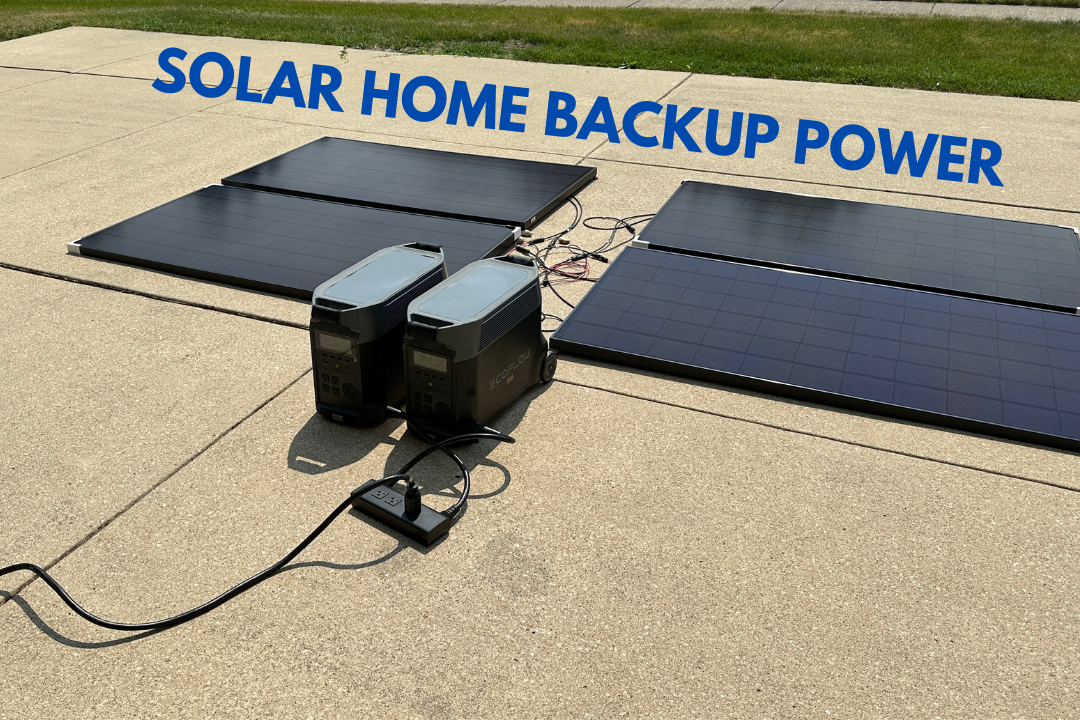This blog post is based on one of my YouTube videos, where I’m testing my home backup solar system. It consists of two Ecoflow Delta Pro units connected to a dual voltage hub that puts out 240 volts. This is then connected to my 30 amp generator inlet with an interlock kit at my service panel to power my home critical circuits in a backup power situation.
If you’d rather watch than read, the video is below. If you’ve got any questions, leave a comment under the YouTube video.
Challenges and Needs
The key challenge in this setup is that the system only has 7.2 kilowatt-hours of capacity. In the winter months, when my energy is at the lowest, I’m using between 20 to 25 kilowatt-hours of power. So, I can’t just depend on these batteries to keep me going for even one day, let alone multiple days. Hence, we need to use the solar charge input capability on each of these Delta Pros.
Initial Testing and Setup
To start, each Delta Pro can take about 1600 watts of solar in, and I’m testing those out with Helium 360-watt panels – two in series – and then two of those going into each of the units. Let me show you how much power I’m actually getting on the input.
Temporary Placement and Wiring
For the purpose of testing, I’m temporarily laying these panels in the driveway. The wiring for each side could not be easier. We’re going in series, connecting the positive to the negative on one panel, and then the other MC4 connecting up to an adapter cable. If you would like to maximize the solar input into a Ecoflow Delta Pro check out this article where I review wiring in series, parallel, and series-parrallel.
Connecting to the Delta Pro
The adapter cable connects to the back of the Delta Pro, converting from MC4 to an XT60 plug, which is the standard solar input for the Ecoflow unit.
Power Input Monitoring
Using the Ecoflow app, we can monitor the input and output power from each of these units. The OG Delta Pro is getting about 480 watts from the two solar panels but putting out about 430 watts. The new Delta Pro is also getting 480 watts but only putting out about 230 watts.
Increasing Solar Input Power
Next, we try to bring four panels in series to increase the solar input power. The same setup as before, but just rearranging to get four of those in series. However, I found out that the output voltage is more than 40 volts for each panel, and when you place four of those in series, that gets you to 160 volts, which is outside the range of the solar input on the Ecoflow Delta Pro that ranges from 11 – 150 volts.
Solution and Adjustments
To resolve this, I was able to bring three panels in series instead of four. This brought in about 700 watts of solar input power, which is much better than the 480 we had before. If you want the full 1600 watts capability, you need to be selective about your hardware and configurations and most likely utilize wiring panels in a series-parallel configuration.
Multi-Day Backup System
Overall, this gets us closer to a multi-day whole-house backup system. However, these panels weren’t specifically selected for this application. That’s why there’s a little bit of a mismatch. The ideal system would be based off of two Ecoflow Delta Pros, a Dual voltage Hub, and the capability to charge those during the daytime.
Conclusion
So, there you have it. A step-by-step guide to testing a home backup solar system. If you need help with solar around your own house, check out our special page where we can start helping you out. We have some solar consultants that can help work through your specific home energy consumption needs or a solar calculator to get you started.

